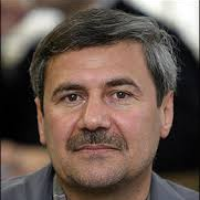Explanation of the Southwest Asia Role in the Future of the World Economic System
The nature of the global imperial system and the military approach to geopolitics encouraged the twentieth-century rival powers of the world to get control of the Heartland to ensure their security in the geopolitical and geostrategic regions of the world. In this period, the imposition of instability in southwest Asia was due to the fear of the influence of competing powers and the use of the region to reinforce their dominance in the world. Southwest Asia as a subset of the international system, is a multifaceted example of the modern world order and the basic question is: how will the development and structuring of the south-west Asia region affect the establishment of the global economic system and the coherence and stability of the global geopolitical system?
The present paper has theoretical, applied and developmental dimensions, and is based on descriptive-analytic research. Data collection was done by library and documentary method, and analysis of the findings was done qualitatively and inferential.
According to Wallerstein, the trajectory of the global empire was the ultimate deficiency of its power to maintain a vast empire from a single political center, while the global economic trend is more dynamic because it creates competitive relationships among a large number of governments. (Griffiths, 2005, 986). Wallerstein and Taylor see the end of the global empire as the economic deployment as an alternative to political power at the top of the global system, and Cohen's systemic perspective places the system as the dominant component of the hegemonic power substitution. In systemic terms, elements of the system are the first component of the system, and the interaction of elements is the second component of the system. Cohen has a special interest in the ability of regional Economic to end the instability and fragility of unstable regions and fragile strips (Cohen, 2008, 98). One of the capabilities of regional Ecumenies in the era of globalization is to strengthen and accelerate the return process of the divergent border concept to the convergent notion of the frontier. Borders that are the product of the modern era determine the limits of the political realms of the states and look at the interior, but the frontiers are looking out.Regional Ecumeny in the Westphalian context is the purpose of colonial plans to prevent the emergence of geopolitical regions, and in the post-Austrian space, they are to become the focal point of the dialectical interaction and the coherence of the components of the global system.The process of globalization and the need to establish and continue the dialectical cooperation between the two eastern and western parts, promotes the geopolinomic location of Southwest Asia, along with its new definition of the heartland of energy. The main problem in the Southwest Asia is the separation of the national eco-munitions and the densest areas of population concentration and economic activity from one another into the presence of mountains, plateaus and deserts. In the meantime, there are three propositions in the Persian Gulf, the Gulf of Alexandria, and the borders of Saudi Arabia and Bahrain, which are related to the beyond the national borders.Another area extending from Gwadar and jiwani Pakistan to Chabahar and Jask is a strategic and crossroads that can turn into a regional political economy and global political economy.On the other hand, with the formation of a new region (Euro- Mediterranean), the major strategic and economic responsibilities of the maritime area in these territories will be transferred from the United States to coastal Europe (Cohen, 2008, 799 - 800); and the movement of South-West Asia and Mediterranean Europe The formation of a joint geostrategic area could be of greatest help to the health of the globalization process.With the diversification of investments throughout the world's corridors, Southwest Asia is becoming the centerpiece of global integration of global geopolitical sub-systems, and it displays its geotechnical heartland feature in the design of the new Silk Road. The new Silk Road Project is an answer to the need to retrieve the role that the historic Silk Road played by connecting and engaging business between the West and the East.Connecting the rail network of the Mediterranean region with the Mediterranean Sea through the ports of Syria and Lebanon will have many economic benefits to the economy and regional and global security stability. On the other hand, the ground distance between the two Persian Gulf and Mediterranean seas is considered to be an area between the two eastern and western hemisphere, but the connection of the two seas with the construction of the international waterway facilitates the promotion of the role of the new intercontinental geostrategic role in ensuring the global system coherence.In terms of energy, the UNIDO (1994) proposal is most consistent with the need to enhance the global role of the region. In this plan, the construction of the world's largest gas liquefaction terminal in Chabahar and the construction of an intercontinental energy pipeline have been proposed in the framework of the idea of global energy security that transports South Asia and Central Asia through Southwest Asia, from both South and North Connect the Mediterranean. Most of the world's gas resources connect to the consumer markets through the southern route, and its transit route to Israel can be overcome with partial repair of the proposed route.
Instead of hegemony, the system's emphasis on the dialectical interaction of the sub-systems is the major difference between the global economic system and the global imperial system. In this framework, the urgency of emphasizing the unity of the origins of human civilization is evident in the balance between dialectics between the parts of the world Island, and from this perspective, the World Hartland Supplementary Ural-Digital Region is considered to be the most important geostrategic area of the world. In this way, the great difference of the world economic system with the global imperial system manifests itself at the end of the global heartland instability and promotes the role of Southwest Asia in global change from a secondary role to an early role.
-
A Comparative Comparison of Geopolitical Competition in China's Belt and Road Initiative and the Global Gateway Plan of the European Union
*, Javad Gholami
Research Political Geography, -
Demographic Implications of Fluctuations of Helman River Water Rights in Sistan Region
Mahdi Mohammad Sadeghi, *, Rasoul Sadeghi, Rasoul Ghobadi
Journal of Community Development, -
Noopolitics; A New Paradigm in Geopolitics
Marjan Badiee Azandahie *, Qiuomars Yazdanpanah Dero, Mahmood Vasegh, Abbas Ahmadi, Maryam Salmanian
Geopolitics, -
An Analysis of Turkiye's Water Policy Towards Iran and Iraq, Using the Hypothetica and Swain Models
Reza Dolati, *, Mohammadbagher Ghalibaf, Mahmood Vasegh
Journal of Strategic Studies, -
Identification and Ranking of the Factors Affecting the Water Crisis in Isfahan Province
Mehrdad Bagheri, *, Amir Gandomkar, Ahmad Khademolhoseiny
Geography, -
The effect of water crisis on the destruction of the foundations of life; Case study: land subsidence in Isfahan province
Mehrdad Bagheri, *, Amir Gandomkar, Ahmad Khademolhosseini
Journal of Space Political Planning, -
سلام ربانی
محمد علی محمدی
نشریه کیهان فرهنگی، آبان و آذر 1390 -
Preparation of nano gold powder from acid leaching tail solution
M. Kargar Razi, M. Khosravi, R. Sarraf Mamoory, M. Mohammadi
International Journal of Nano Dimension, Summer 2010




